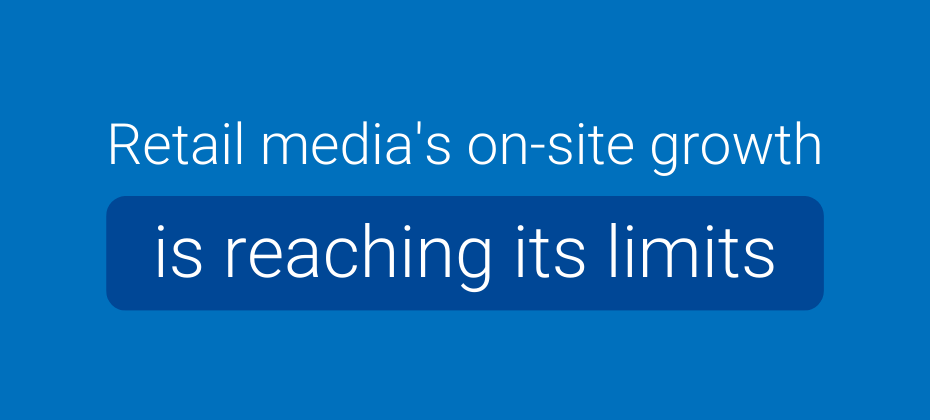At A Glance
Reaching the right audience is becoming more challenging as digital advertising grows increasingly fragmented, and privacy regulations change. 33Across addresses this by providing real-time intent signals and contextual insights, helping marketers connect with consumers across devices like CTV, mobile, and desktop. Integration into Experian's marketplace makes these solutions more accessible, helping advertisers achieve measurable results.In our Ask the Expert Series, we interview leaders from our partner organizations who are helping lead their brands to new heights in AdTech. Today’s interview is with Allison Dewey (Director, Data & Curation) at 33Across.
Navigating complexity in digital advertising
Digital advertising is more fragmented and privacy-constrained than ever. How is 33Across helping marketers cut through that complexity to drive real outcomes, and what makes your approach distinct?
Reaching audiences without compromising scale or performance is one of the toughest challenges for marketers. Users consume content across multiple devices and channels, making it difficult for marketers to identify and accurately target them with the right message. 33Across segments leverage AI-powered contextual and behavioral signals across privacy-safe environments to help marketers accurately identify audiences, whether they’re streaming content on their connected TV or researching products on their mobile device. What sets us apart is that we don’t just identify valuable audiences; we help marketers also target cookieless inventory and power it with real-time signals.

Marketplace integration milestones
What excites you most about bringing 33Across audiences into Experian’s data marketplace?
We’re excited to bring 33Across audiences into Experian’s data marketplace because it connects our unique segments with a powerful data ecosystem that marketers already trust. Buyers looking to activate audiences that are both privacy-safe and performant continue to tap into the Experian data marketplace for high-quality, high-performing data. We offer a wide range of audience verticals, including B2B, demographic, retail purchase data, interest and intent, and political data. In addition, we offer the ability to create custom segments across verticals.

Our intent-based audiences, built from contextual and engagement signals, help buyers reach consumers on CTV, desktop, or mobile devices with scale. Being part of Experian’s data marketplace accelerates access to these audiences, drives better ROI, and helps brands future-proof their strategies today.

Retail demand signals
Retail brands are racing toward privacy-safe, first-party data. Which 33Across retail datasets or segments are experiencing the highest demand, and what makes them a must-have?
Retail marketers are leaning into contextual and behavioral intent signals to complement their first-party data strategies. At 33Across, we’re seeing high demand for segments tied to shopping intent, including in-market consumers browsing for categories like fashion, home goods, electronics, and health & wellness.
What makes these segments essential is their real-time nature – they can capture consumer interest as it happens. For retail brands looking to expand their reach while respecting privacy, our segments offer scalable, actionable intent that drives results.

B2B without cookies
Reaching real B2B decision-makers at scale is tough with or without signals. How does 33Across deliver both precision and reach in this environment?
B2B marketing often struggles with balancing scale and specificity. 33Across addresses this by combining contextual precision with AI-modeled behavioral signals; this segment approach reaches professionals actively engaging with relevant content and topics, even in environments where IDs are unavailable. Marketers gain access to more signals and, in turn, better reach from 33Across’ unique publisher integrations and audience curation built from machine learning and AI.
We surface intent through content consumption patterns and contextual engagement, unlocking valuable, privacy-safe signals at scale. Allowing B2B marketers to reach real decision-makers in a signal-sparse world.

Use cases
With retail, B2B, and beyond, can you share an example of how brands in these verticals are utilizing your audiences?
Top brands that have a user-focused approach use 33Across audiences to drive scale; performance. These brands enable our segments to precisely reach the right users across devices and increase conversion rates; brand awareness. By reaching the right users, brands have higher conversion rates and increase campaign efficiency.

Supply path innovation
As identifiers disappear, advertisers are looking for scalable, privacy-safe ways to reach real people. How is 33Across helping unlock more addressable inventory and drive performance?
By combining contextual, semantic, and engagement-based signals, we deliver intent-based targeting that performs across CTV, display and video. Higher addressability helps marketers not only extend their reach but also deliver personalized messaging across digital channels in a privacy-compliant way.
Contact us
About our expert

Allison Dewey
Director of Data and Curation, 33Across
Allison Dewey is the Director of Data & Curation at 33Across, where she oversees data partnerships, integrations, and supply-side curation. With a deep expertise in audience targeting and signal optimization, Allison plays a key role in connecting data into the programmatic world. Allison holds a Bachelor’s degree in Psychology from Bates College.

About 33Across
Rooted in over 15 years of data expertise, 33Across harnesses signals to enrich and expand marketers’ audiences and reach them wherever they consume content. Built from over 300 billion proprietary data signals, we apply machine learning and AI to create over 1,500 B2C and B2B segments using privacy-first principles to reach audiences.
Cookieless targeting FAQs
By using contextual and engagement-based signals, advertisers can target consumers across CTV, mobile, and desktop in a privacy compliant way, even as identifiers become less available.
Segments tied to shopping intent, such as consumers browsing fashion, electronics, or health products, are highly sought after because they capture real time interest and drive results.
Combining content engagement patterns with machine learning allows marketers to reach professionals actively engaging with relevant topics, even in environments where IDs are unavailable.
Privacy safe targeting uses real time contextual and behavioral signals to deliver relevant messaging across devices and channels without compromising consumer trust.
Real time intent signals allow advertisers to capture consumer interest as it happens, helping demand side platforms and brands deliver timely, relevant ads that increase engagement and drive conversions across devices like CTV, mobile, and desktop.
Latest posts

As the days get longer and the weather warms up, spring’s revitalizing energy naturally leads to realignment. For marketers, it’s the perfect moment to reevaluate strategy, especially as consumer behavior changes ahead of summer and brings a renewed interest in travel, outdoor activities, and social events. Making seasonal adjustments to your marketing strategy helps you adapt to these shifting behaviors, capitalize on 2025 marketing trends, and keep your brand relevant year-round. When it comes to your marketing strategy, spring cleaning means clearing out outdated tactics, optimizing what works, and making room for smarter, more connected solutions. Take the time to ask yourself questions like: Are our audiences still relevant? Are we activating our data across the right channels? Are we collaborating with the right partners and using the right data clean room providers? If there’s room for improvement, now is the best time to audit, refine, and refresh your marketing strategy before the high-stakes summer and winter seasons. With identity resolution, data enrichment, data clean room collaboration, and omnichannel activation through Experian, you can clean up what’s outdated and prep your strategy for summer success! Rethink your data and identity resolution strategy Your data is foundational to your strategy and is a great place to start your marketing strategy spring cleanup. If your customer information is outdated, incomplete, or fragmented across systems, every campaign built on top of it risks underperforming. Before jumping into segmentation, activation, or partnerships, assess the health of your data and identity infrastructure. This is your deep clean and an essential first step in ensuring everything else works better. With signals disappearing, buying channels proliferating, and customer journeys getting more complex, the key to maintaining addressability is investing in persistent identity, complete consumer data, and collaborative measurement strategies that can weather these changes. Here are some ways to rethink your marketing data management and identity strategies for the current environment. Set the data foundation A solid identity resolution strategy starts with high-quality, unified data. Consider a comprehensive refresh of your customer records by auditing and enhancing what you have for accuracy and depth. As you’re thinking through spring marketing ideas, it’s an ideal time to enrich your first-party data by appending missing details, removing outdated records, and ensuring you enter summer with reliable, up-to-date profiles. Data enrichment Customer data naturally degrades, and eventually, you’ll need to dust it off by supplementing consumer records with current, high-quality insights and attributes. Experian data enrichment can help you seamlessly refresh records with updated demographic and behavioral data, giving detailed insights for precise targeting and relevant campaigns. With over 5,000 attributes available, covering everything from age and income to shopping habits and media preferences, you can maintain the deepest, most up-to-date view of your consumers through every season. Offline identity resolution and append Offline identifiers — like names, physical addresses, and phone numbers — are the most persistent identity markers as they rarely change compared to digital cookies and device IDs. They’re essential for a stable identity foundation, and you can use them to develop a consistent, unified view of each household and individual. Use this season to audit and tidy up your offline records. Are key identifiers missing? Are you relying on outdated addresses or duplicate names? Experian’s Offline Graph serves as the foundation to help unify those fragmented pieces, resolving identities across households and individuals to create a clean, consistent view of every customer. Think of this step as scrubbing baseboards or cleaning behind the fridge. It’s often overlooked but a prerequisite to a thorough spring refresh. You can also use Offline Identity Append to append missing identifiers to improve match rates, boost data accuracy, and ensure addressability so that when summer campaigns launch, you’re ready to confidently meet your audience where they are. Digital resolution via Digital Graph This next step is like replacing your air filter each spring. You won’t see it, but you’ll definitely feel the difference in performance. Digital resolution ensures persistent, accurate targeting across devices and channels in a fragmented omnichannel environment. Experian’s Digital Graph facilitates easy consumer identification and connection across the digital ecosystem. Our graph links digital identifiers like mobile ad IDs (MAIDs), connected TV IDs, and hashed emails to consumer profiles. So, when a customer interacts on a smartphone, a smart TV, and a laptop browser, those actions can all be tied back to the same individual or household in your database. Collaborate securely in data clean rooms to close gaps Matching partner data within your own secure space, a trusted third-party clean room, or Experian’s privacy-safe environment is an essential next step in your marketing spring cleaning strategy. But what is a data clean room? A data clean room is a privacy-first way to enhance marketing data in a secure environment that allows brands and partners to match and analyze data without exposing personally identifiable information. It’s almost like organizing a shared closet. You both bring what you have, sort it safely, and leave with something more valuable without mixing up or exposing what’s personal. Secure collaboration enriches your understanding of consumers, boosts match rates, and ensures the highest data security standards. Here are key data challenges you can tackle through data collaboration—whether in a clean room or across your broader data strategy. Lack of insights or usable data Without third-party cookies, marketers run the risk of losing valuable consumer insights. Collaborating with key partners lets brands enrich their first-party data and obtain a more comprehensive view of customer behaviors for informed decision-making. Let’s say, for example, that an advertiser with sales data but no exposure data struggles to attribute sales to specific campaigns. By collaborating securely with a measurement partner who provides exposure data, the advertiser can confidently link sales to ad exposure and optimize future campaigns with an understanding of who saw their ad and made a purchase. We anticipate that data collaboration will be a key marketing trend in 2025 alongside signal loss. Low or no match rates When businesses handle matching internally, discrepancies like name variations (e.g., John Doe vs. Jonathan Doe) or mismatched identifiers (hashed emails vs. MAIDs) often result in poor match rates. Experian’s identity resolution capabilities, meticulous hygiene processes, resolution logic, and comprehensive identity graphs significantly enhance these match rates. For example, if a data provider had physical addresses and a demand-side platform (DSP) had email addresses, they couldn’t collaborate with different identifiers. Using Experian Collaboration, however, their data could be resolved with offline identity data from our graph, enabling them to share their collaboration data and improve their marketing efforts. Data security When it comes to data collaboration, protecting your proprietary and customer information is non-negotiable. That’s why Experian operates with some of the industry's strictest data security, privacy, and compliance protocols. We support identity resolution and data collaboration within the most secure environments available — data clean rooms built to prevent sensitive customer data from ever being exposed. Instead of moving or sharing your raw data, we ensure all records are anonymized before any analysis occurs. Additionally, Experian’s clean room integrations with trusted partners give clients flexibility without compromising compliance. All solutions are designed to meet GDPR, CCPA, and industry-specific data governance standards, with full audit trails and customizable access controls. Connect and activate Once your data is clean, enriched, and resolved, the next step is to activate it efficiently across the channels where your audiences spend time. This step is like putting everything back in place after a deep clean so everything is functional, easy to access, and ready to deliver results. As you get ready to put your spring marketing ideas into motion, it’s time to streamline your activation approach and make sure your customer data is working hard for you. First-Party Onboarding With Experian First-Party Onboarding, you can ship data where needed using flexible data solutions for your activation strategy. This step is like labeling and organizing your freshly cleaned marketing closet, so each audience segment is ready to deploy wherever you need it. We make it easy to: Understand your customers on a deeper level Seamlessly onboard your customer data for use across programmatic, social, and advanced TV platforms Combine your first-party data with Experian syndicated audiences for enriched targeting Deliver those audiences to any destination that accepts Experian Audiences — whether a DSP, social platform, or publisher Increase match rates, extend reach, and lower activation costs Transact in the ecosystem with the Experian ID To aid in the activation process, Experian ID is a unified identifier that acts as a privacy-safe bridge between fragmented emails, device IDs, and addresses, helping you activate audiences across all media channels. Experian ID keeps your data protected and connected whether you send it to DSPs, social platforms, or data clean rooms. This allows for secure activation and performance tracking across the ecosystem without exposing personally identifiable information (PII). Like sealing and storing your seasonal belongings in airtight containers, Experian ID keeps your data clean, safe, and always ready for use. Use fresh audience insights to inform segmentation After deep-cleaning your data, enriching profiles, and resolving identities, you’ll want to ensure your segmentation reflects that renewed foundation. Just like clearing expired ingredients from your pantry, spring is an ideal time to toss outdated audience definitions and replace them with insights that are fresh, relevant, and ready to perform. With Experian’s modern audience tools, you can create smarter segments, power omnichannel strategies, and continue reaching high-value consumers even in cookieless environments. Our marketing data management tools make it easy to: Build detailed, personalized profiles using over 5,000+ behavioral and lifestyle marketing attributes that go far beyond basic demographics. Choose from 2,400+ pre-built syndicated segments or collaborate with Experian to create custom audiences tailored to your KPIs and campaign goals. Append fresh attributes to your CRM to keep profiles accurate, performance-ready, and reflective of current consumer behaviors and life stages. Together, these tools help sharpen your segmentation strategy and ensure up-to-date audience insights power every campaign. Let’s break down how smart combinations and contextual precision can further elevate your segmentation. Combine our identity graphs and Marketing Attributes for sharper targeting Combining Experian’s identity graphs with Marketing Attributes gives you both the who and the why behind your audience and helps you act on that insight with precision. It’s like giving your closet a total spring refresh — not just purging what doesn’t fit but also organizing what’s left into ready-to-wear outfits. Digital Graph + Marketing Attributes: Link real-time digital behavior (like CTV, mobile, or web activity) with rich consumer insights to create segments that perform across channels, from mobile to CTV to social. Offline Graph + Marketing Attributes: Tie persistent offline identifiers like name and address to behavioral and lifestyle data, making it easier to plan full-funnel strategies from direct mail to digital display. This approach gives you the clarity and flexibility to build richer personas, reach more qualified audiences, and target with confidence across any environment. Activate smarter with Contextually-Indexed Audiences Spring cleaning your strategy also means letting go of legacy tools, especially those relying on cookies or outdated tracking methods. With Experian’s Contextually-Indexed Audiences, you can reach consumers based on the content they’re engaging with, not their identifiers. We map millions of websites to real audience segments so you can target high-intent consumers in a privacy-safe, way. For example, an automotive brand looking to reach high-intent luxury EV shoppers can activate Experian’s “in-market for a luxury electric car” segment. With contextually-indexed targeting, that brand’s ads will appear on websites that over-index for visitors in that audience — such as premium car review sites or sustainability-focused blogs — without relying on user identifiers. This allows the brand to scale performance safely and efficiently in cookieless environments while achieving strong engagement metrics. Activate across channels with confidence After refreshing your data, segmentation, and partner strategies, the final step in your spring cleaning is putting all that prep work into action — efficiently and at scale. Think of this as your final sweep: optimizing where and how you activate your audience to ensure every touchpoint is aligned, accurate, and impactful. With your updated segments and sharpened identity framework in place, you can reach consumers across display, mobile, connected TV (CTV), and emerging digital channels. Experian provides the tools to activate seamlessly — backed by privacy-safe, high-quality data and flexible integration options. Third-Party Onboarding: Expand reach with external data sets Experian’s Third-Party Onboarding capabilities make it easy for brands to augment their first-party data strategies on their preferred activation platforms with easy access to high-quality, activation-ready third-party audiences. For you, this means you no longer have to manage the onboarding process yourself or worry about compatibility. Instead, you can: Enhance your first-party targeting with third-party data that’s already privacy-safe and activation-ready. Reach more qualified consumers by layering in external behavioral, lifestyle, or intent signals. Maximize scale across your preferred platforms using Experian’s established integrations and ecosystem support. With Experian as your trusted partner, your audience strategy becomes more flexible, more scalable, and more effective, giving you the power to engage the right consumers beyond your own CRM. Start preparing now for summer campaigns You’ve cleared out the clutter, restocked your toolkit, and optimized your data strategy, and now, you’re ready to get ahead of the summer rush. While summer is go-time for high-impact marketing campaigns, now is the time to clean, organize, and prepare. Another reason to start now? Tariffs, inflationary pressures, and changing consumer confidence are already impacting product demand, budget planning, and go-to-market strategies for the rest of the year. Brands need to be ready and agile in the face of economic turbulence. So, think of this as your final recap checklist before the season (and the economy) changes: a set of intentional steps that ensure all your prep work translates into real performance when it counts. Start now to: Cleanse and enrich your data: Make sure outdated records don’t weigh down your summer outreach. Refresh profiles with Experian’s latest attributes to stay aligned with consumer behavior. Solidify your identity resolution strategy: Transition to persistent, privacy-safe identifiers like Experian’s unified ID to maintain addressability across devices and channels. Collaborate with key partners: Run pilot campaigns with trusted collaborators to augment your data and maximize scale ahead of peak season. Refresh audience segments: Update personas and segments based on the latest data insights. Trial omnichannel strategies: Use spring to test messaging across display, CTV, social, and mobile so your summer creative hits with precision. Confirm measurement readiness: Double-check attribution and analytics tools so you can optimize in real time and prove ROI. Tailor creative to the season: From backyard barbecues to road trips, ensure your messaging taps into the themes and activities consumers care about most this summer. Spring is the warm-up. Summer is the performance. Start today to improve your marketing data management and overall strategy, and you’ll be ready to hit the ground running. Let’s plan your seasonal strategy together Whether you’re looking for more spring marketing ideas or want to launch a high-impact summer campaign, Experian is ready to help. From strategy to segmentation and data clean rooms to real-time activation, we partner with you to build a marketing engine that performs now and keeps growing through the seasons. Connect with us today, and let’s turn your seasonal refresh into long-term momentum Latest posts

Retail media networks (RMNs) are on the brink of a major shift. While they are poised to capture over 20% of ad spend in 2025, on-site monetization won't be the growth driver it once was. With advertisers consolidating spend among just six or seven RMNs on average, including giants like Amazon and Walmart, it’s hard for smaller RMNs to compete. Off-site retail media ad spend is projected to grow 42.1% in 2025 – nearly three times the rate of on-site growth (15.1%), according to eMarketer's November 2024 forecast. This dramatic shift underscores that while on-site placements are maturing, off-site is where the momentum (and money) is heading. To remain competitive, RMNs must move beyond traditional, on-site placements and embrace a broader, more integrated approach to media activation. The future of retail media is about utilizing enriched first-party data to drive performance across the open web, connected TV (CTV), and other digital channels. Break free from your owned and operated properties Historically, RMNs have limited ad placements to their own digital properties. While this approach has delivered high-margin returns – on-site ad margins can reach 70-90%, compared to 20-40% for off-site – it’s also inherently limiting. Retailers only have so much owned inventory to sell, and advertisers demand greater scale and flexibility. As brands push for more reach, RMNs must extend their impact beyond owned-and-operated (O&O) properties. Omnichannel retail media ad spending is forecast to hit $61.2 billion in 2025. Brands are looking beyond retail sites to build integrated, multi-channel strategies that drive results across the funnel.eMarketer Off-site doesn’t just mean digital. Walmart’s recent expansion of its Fuel and Convenience stations – planning to open or remodel 45 in 2025, bringing the total to 450 – shows how physical spaces are also becoming extensions of a retailer’s media network. These locations create new touchpoints where advertisers can engage shoppers with timely, context-aware messaging while they fuel up or grab a snack. These quick-stop environments are ideal for limited-time offers or impulse-triggering messages – especially since 68% of U.S. adults say discounts contribute to their latest in-store impulse purchase. Maximize the value of first-party data One of retail media’s biggest promises is the power of first-party data for precision targeting. While on-site ads are inherently lower-funnel, off-site activation allows advertisers to move up the funnel and apply retailer customer data holistically across the open web. For example, DoorDash and Macy’s now offer self-service audience data to advertisers via The Trade Desk, allowing brands to target consumers programmatically. Meanwhile, Walmart is taking a different approach – cloning The Trade Desk’s technology to maintain its walled garden. These moves demonstrate how retailers are rethinking data monetization strategies to scale beyond O&O limitations. Drive new revenue streams with off-site activation Off-site activation enables RMNs to drive incremental reach on channels where audiences are actively engaging, including CTV, programmatic display, and social media. This expansion allows brands to connect with consumers beyond retail websites. Retailers are also utilizing non-endemic advertising opportunities in environments like gas stations and kiosks. Unlike traditional grocery or apparel aisles, these spaces are brand-neutral, allowing advertisers who don’t sell products in-store to still activate campaigns using retailer data. In fact, 53% of brands have already partnered with a retailer that doesn’t carry their product, and that number is expected to grow as advertisers seek new ways to tap into retail media’s rich targeting capabilities. Retailers looking to extend the value of their data beyond O&O inventory have two primary off-site opportunities: First, they can use an identity graph to resolve customer identifiers into addressable IDs that can be enriched with additional attributes and activated across channels like the open web and CTV. This allows retailers to find and reach known customers with relevant messaging outside of their owned platforms. For example, a grocery RMN can identify lapsed snack buyers and deliver streaming TV ads that reengage them on CTV platforms. CTV retail media ad spending alone is expected to grow 43.1% this year, reaching $4.86 billion, highlighting the appetite for video-based upper-funnel strategies. Second, RMNs can broaden reach by activating first-party audiences, syndicated segments, or custom-built audiences through onboarding capabilities. These audiences can be sent to a variety of programmatic and CTV destinations, enabling advertisers to engage shoppers in high-impact environments. For example, a home improvement retailer can send its audience segments to programmatic ad exchanges, ensuring DIY shoppers see relevant offers even while browsing unrelated sites. Together, these approaches allow retailers to monetize their data more effectively while giving brands the ability to reach consumers in moments that matter beyond just retail websites and apps. Scale and measure success with data partnerships For smaller RMNs to compete with larger players, they need more than just inventory – they need the ability to scale campaigns and prove performance. Data partnerships play a critical role in both expansion and measurement. Measurement remains one of the biggest challenges for RMNs moving off-site. On-site retail media offers closed-loop attribution, but off-site activations introduce complexity. Retailers can work with an identity resolution partner like Experian to connect ad exposures to actual retail outcomes, such as store visits or purchases, across digital and physical environments. Whether it's through pixels placed on campaign ads or TV impression logs, these connections help RMNs demonstrate real impact. This approach helps unify disparate data – such as a CTV ad exposure and a subsequent online or in-store purchase – into a clear, measurable outcome. These insights not only show what’s working, but help RMNs optimize future campaigns and provide advertisers with transparent, third-party-validated reporting. As retailers like Walmart integrate loyalty programs like Walmart+ into their physical extensions, they gain valuable behavioral insights into how customers shop across formats – from fueling up to filling carts. These data signals help refine identity graphs and improve measurement across increasingly hybrid consumer journeys. Beyond ads: The data monetization opportunity Smaller RMNs may struggle to scale ad-supported revenue, but there’s another path forward: Data-as-a-Service (DaaS). Providing anonymized, privacy-compliant audience insights to brands offers a high-margin, scalable revenue stream. In fact, some retailers are already embracing this model by licensing their data to programmatic platforms. A playbook for smaller RMNs to win off-site The future of retail media belongs to those who harness data to influence consumer behavior across all digital marketing channels. To succeed, RMNs should focus on: Moving beyond owned inventory: Activate first-party data across CTV, social, and programmatic channels to meet advertisers where their audiences are. Expanding reach through partnerships: Collaborate with identity resolution providers to maximize match rates and campaign effectiveness. Building a full-funnel offering: Position off-site retail media as a brand-building play, tapping into ad budgets that traditionally fund upper-funnel campaigns. Monetizing data, not just ads: Explore DaaS models to generate passive revenue. The time to move off-site is now Retailers that wait too long to embrace off-site activation risk falling behind. Those that expand beyond their owned inventory, invest in off-site data strategies, and build strategic partnerships will be the ones that shape the future of retail media. Experian isn’t just part of the RMN conversation. We’re driving it. Let’s talk. Connect with our team Latest posts

Not all customers are the same, so why waste your budget marketing to them like they are? McKinsey research shows that 71% of consumers want personalized shopping experiences, and 76% get frustrated when they don’t have them. That’s where demographic segmentation comes in. But what is demographic segmentation, exactly? We define it as a process that helps you categorize your audience into meaningful demographic groups so you can reach the right people with impactful custom messages. Businesses across industries are partnering with Experian to power smarter decisions and better results through solutions like demographic segmentation — but what does this look like in action? This article breaks down five real-world demographic segmentation examples, showing how businesses have worked with us to drive measurable success so you can see exactly how it can work for you. What is demographic segmentation? Demographic segmentation involves dividing your audience into smaller, more specific groups based on shared demographics like income, education, gender, job, family status, and more to gain a more granular understanding of your brand’s target segments. The better you know your audience, the better you speak to their unique needs — and the more effective your campaigns will be, as you’ll be able to target each segment with highly personalized content that resonates. For instance, a company might market a new tech gadget to young adults in one way while promoting the same product to families with young children in a completely different way, ensuring the message speaks to each group’s lifestyle and priorities. Demographic segmentation attributes Some of the most common attributes used in demographic segmentation include: Age Each age group has different wants and needs. A new video game might catch the eye of teenagers, while a retirement plan is more likely to appeal to someone in their 50s or 60s. Gender Gender impacts preference for certain products, from fashion to gadgets, so knowing who you’re talking to helps make your marketing more relevant. Income Someone with a higher income might be more likely to purchase premium products, while someone on a budget will respond better to discounts or value-based offers. Education The level of education a person has can influence what kind of messaging will resonate with them, whether it’s complex or more straightforward. Occupation A marketing message targeting busy professionals might differ from one aimed at students or retirees. Occupation can tell you what’s important to a person in terms of their needs and lifestyle. Family Status A family with young kids likely has different priorities than a single person or a couple without children. You can adapt your messaging to be more relevant to what matters most to them, like convenience or value. Benefits of using demographic segmentation Demographic segmentation offers several valuable benefits for marketers. Here’s why it’s one of the most commonly used and effective ways to target audiences: Improved targeting and personalization: Demographic segmentation powers highly customized campaigns so you can cater to different income levels, family structures, job types, and so forth. B2C brands can provide offers based on factors like age, income, and gender, while B2B brands can target by occupation to reach decision-makers. Better product and service development: Understanding which demographics use your product or service is a great way to inform future improvements. Higher engagement: With highly customized content, you can speak directly to specific demographic groups and increase engagement. Cost efficiency: As you target the most relevant segments, you optimize your spending around the most likely buyers and will see better returns. Increased conversion and retention: Relevant, targeted messaging leads to higher conversion rates, and when people feel understood, they’ll want to keep coming back. Clearer customer insights: Demographic data provides precise, actionable insights for refining your marketing strategy. Simplicity and effectiveness: Demographic insights are immediately actionable and easy to implement, which gives you a great starting point for focused campaigns. When to use other segmentation types While demographic segmentation provides valuable consumer insights, there are times when other approaches may offer a more effective strategy: Your business provides location-dependent services. If you strictly serve a local area, geographic segmentation would be more effective in targeting customers based on location. You have access to detailed behavioral data. If you collect data on customer behavior (like browsing history or purchase patterns), behavioral segmentation would allow for more personalized targeting than demographics. You're selling high-end luxury products. While income is a useful demographic variable, factors like values, aspirations, and lifestyle better capture the desires of luxury consumers. Your target audience shares similar behaviors, regardless of demographic factors. Behavioral segmentation might offer more insight if your customers engage with your product or service based on shared behaviors rather than demographic traits. Your product or service targets specific needs or pain points. Segmenting by need or issue rather than traditional demographic variables would likely yield better results if you're offering a solution to a particular problem (like a health-related product). How our customers are using demographic segmentation to produce tangible results Demographic segmentation is about knowing your audience and using data to create marketing strategies that drive measurable outcomes. Let’s look at some real-world use cases from brands like yours that have been successful in this effort, working with Experian to translate demographic insights into significant business growth. Use case #1: Identifying customer spending potential to boost growth for a retail chain Objective A large retail chain wanted to understand the spending potential of each customer in their stores. Their goal was to uncover and maximize untapped spending potential. Solution The large retail chain licensed Marketing Attributes to identify the top demographic factors that drove spending in the retail store the previous year. The four key drivers were: Age Income Family structure (household composition) Location/region Results By combining these attributes to create custom segments, we uncovered two valuable annual estimates: Potential spend: A conservative estimate of how much a customer could spend if they reached the top 20% of spenders within their specific demographic segment (based on data from the highest spenders). Unrealized spend: The difference between a customer's annual potential spend and their current spend. An estimate of how much more they could be spending each year. These demographic segments provided the marketing strategy the retail chain used to target $1.1 billion in unrealized spend. This revealed how much additional revenue could be captured by targeting the right customers with tailored marketing and offers through demographic segmentation. Use case #2: Helping a financial institution identify regional DE&I opportunities Objective A large financial institution needed help identifying regional diversity, equity, and inclusion (DE&I) opportunities. They wanted to better prioritize their outreach to underserved communities in the Los Angeles area. Solution We provided the data and insights to pinpoint specific areas needing attention. We used three key indices to analyze the region: Income index: Measured each underserved economic group by comparing the percentage of low-to-moderate income consumers against the entire L.A. area. Ethnicity index: Measured the percentage of consumers by ethnicity, such as African-American, Hispanic, Asian, and others, against the entire L.A. area. Credit index: Identified potential credit disparities by looking at the average FICO score and the percentage of customers with credit accounts against the entire L.A. area. Results Our client received an analytics dashboard to track and report these metrics, providing clear, traceable data to prioritize DE&I outreach. This dashboard helped them measure progress toward more inclusive practices. Use case #3: Segmenting a health supplement ambassador program for enhanced engagement Objective A health supplement company wanted to identify specific segments within their ambassador program to provide better support and increase engagement. Solution We developed tailored customer segments to address specific needs and behaviors. These segments included: Young and independent: Younger, lower-income singles or starter households who are just beginning to establish their own lives. Families with ends to meet: Young and middle-aged families with kids who are budget-conscious, often using coupons and enjoying fast food. High-end families: Middle-aged families with kids and high incomes, financially secure big spenders who also give to charities. Empty nesters: Older households with no kids who focus on cooking at home and may have more disposable income. Results Segmenting at registration allowed for more effective communication and engagement with prospects. Customized messaging, guided by customer demographics and purchasing behaviors, improved acquisition and retention by helping the right messages reach the appropriate individuals through their preferred channels. Use case #4: Comparing customer bases: Insights for a retailer across two cities Objective A national retailer with locations in two major cities (their home base city and a recent expansion city) wanted to understand how different their customer base was in each city. They aimed to uncover key demographic and behavioral differences to refine their marketing strategies and ensure each location received the most relevant messaging and promotions. Solution We analyzed each city’s customers across a wide range of characteristics:. Demographics: The expansion city had a younger population with more families, while the home base city had an older and more established customer base. Purchasing behavior: Customers in the expansion city spent more per transaction than those in the home base city. Preferred marketing approach: Customers in the home base city were likelier to be Brand Loyalists, responding well to familiar, trust-driven messaging. Shoppers in the expansion city were Savvy Researchers who responded better to value-based content and product comparisons. Results Using these insights, the retailer tailored its marketing approach to align with each location’s customer base: Home base city: Focused on maintaining loyalty by emphasizing brand trust and highlighting long-term customer benefits. Expansion city: Positioned marketing to appeal to younger, family-focused consumers to showcase high-value purchases and competitive pricing These adjustments led to improved engagement and higher sales in both cities. Use case #5: Optimizing direct mail to help a nationwide retailer maximize impact on a limited budget Objective Facing a shrinking marketing budget, a nationwide retailer needed to refine their direct mail strategy to reach the right customers while reducing costs. Solution We developed a comprehensive dashboard summarizing two dozen recent direct mail campaigns, which allowed the retailer to: Understand the demographic composition of high-response customers across different regions. Identify key patterns in response rates, helping them pinpoint the most receptive audiences. Discover that the Power Elite Mosaic Group representing affluent, high-spending households comprised only 17% of their mailed audience but accounted for 47% of responses. Results With these insights, the retailer restructured their direct mail strategy to target the highest-performing segments. Changes like these led to a 30% reduction in mailing costs while retaining 92% of sales, proving that strategic segmentation can drive efficiency without sacrificing revenue. Explore demographic segmentation with Experian Now that we’ve defined demographic segmentation and provided real-world examples, it’s time to explore how Experian data can help you better understand and connect with your audience. Experian’s Marketing Attributes provide rich, privacy-conscious insights into consumer demographics, lifestyles, and behaviors. These insights empower marketers to personalize experiences, refine targeting strategies, and make more informed decisions. With a deeper understanding of who your customers are, you can create more meaningful, impactful campaigns that drive stronger engagement and results. Connect with us today to see how our data and expertise can improve your targeting, personalization, and campaign performance. Connect with us Latest posts